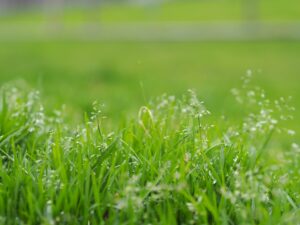
The winter season can be a great time to plant grass seeds. The soil is usually very moist, and the days are shorter which makes it more difficult for the soil to dry out. A short, cold, winter day provides just enough warmth for the seed to penetrate deep into the soil where it will have plenty of time to grow.
However, you don’t want to wait too long before planting your seed since there is the risk of frostbite or thawing which could do damage to the seed. Here’s when you should plant your grass seed this year.
Why Is Winter a Good Time to Plant Grass Seed?
Many areas of the country experience above-average growth during the winter months. This means your grass can take root and grow more easily when the soil is warmer than normal. And during the winter, you can avoid cold-weather injuries to your lawn.
During this time of the year, grass can continue to grow under the soil, without getting scorched by the sun. It is common for folks to plant grass seeds after the first frost. However, as the temperatures drop below freezing, the seed will not survive the frigid temperatures.
The ideal temperature to plant grass seed is 50 degrees Fahrenheit. Unfortunately, not all areas receive above-average temperatures in the winter.
When Cold is Too Cold for Planting Grass Seed
Here are some of the factors you should consider when planting your grass seed: How long it’s been since you last mowed your lawn. If it’s been a while, you should not plant your seed until it has had at least 3 to 5 days to dry out before replanting it.
This will prevent it from being damaged by freezing cold weather. It has been a long time since the last rain or dew. If it’s been a long time, the grass seed might have been sitting in damp conditions which could damage it.
How warm the soil is. If the soil is too warm, the seed will be killed. If it’s too cold, the seed might not be able to penetrate deep enough into the soil. How long it’s been since you used a cultivator or spade to loosen the soil.
The Best Time to Plant Grass Seed
When you have cold soil and it’s not the first spring, it’s not a good idea to plant grass seed. Grass seeds tend to require about 60 degree days, which will usually be present when grasses are trying to germinate in the spring.
Grass seeds prefer to germinate at temperatures of about 55 degrees Fahrenheit or more, so by planting grass seed in the spring or early fall when you know you can expect those temperatures, you’ll guarantee a better and more vigorous grass crop.
However, if your soil is very dry this time of year, you may want to consider planting grass seed at any time to ensure the seed has enough time to penetrate deeply into the soil and start growing. How Cold Is Too Cold to Plant Grass Seed? It’s best to plant grass seeds once temperatures reach about 25°F.
Planting Grass Seed in the Fall
In late October or early November, you should be planting your grass seed to be on the safe side. If you wait until late November or early December, it will still be very warm in the afternoon when you get home from work.
You should only do this if you are comfortable with frostbite. If you wait until spring when the grass is dormant and the soil is still warm, there is a risk that it may have problems with dehydration and be killed off.
Planting Grass Seed in the Spring: Planting grass seed in the spring is a better idea because the soil temperature is usually very cool. You will still want to wait until at least March to be sure the seed will survive. The danger with planting grass seed in the spring is a very brief, short cold snap.
Planting Grass Seed in the Spring
As spring approaches you will be thinking about planting your grass seed. The most popular method to avoid frostbite and to ensure that the seed germinates before the temperature drops below freezing. Grasses are slow-growing so plant your seed in early spring when the temperatures are warmer.
Don’t be tempted to plant the seed now when the temperature is below freezing, the ground may not be warm enough. Grass seeds need a relatively warm temperature to germinate and grow. You can start seeds indoors in a warm location such as your kitchen sink for a few weeks, and then transplant them into the garden. Grass seeds can take up to a month to sprout.
Conclusion
Using these techniques can increase the number of plants that you get for your efforts while having your best chance to grow in a different environment than the one you normally grow them in. Hopefully, these techniques will improve your success at growing a decent number of plants without paying for all that they cost.